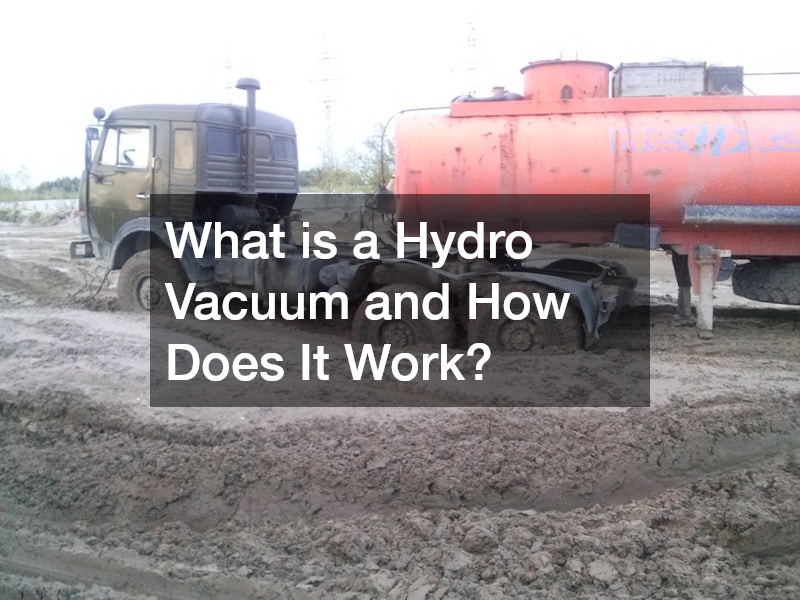In recent years, the use of hydro vacuum systems has become increasingly prevalent across a wide range of industries, from construction and utilities to environmental management and excavation. As regulations tighten around traditional excavation methods and environmental impact, hydro vacuum technology presents a safer, cleaner and more precise alternative.
But what exactly is a hydro vacuum and how does it work?
At its core, a hydro vacuum is a specialised system that combines high-pressure water and industrial-strength suction to excavate soil or remove debris. This method, often referred to as non-destructive digging (NDD), allows workers to locate underground assets without damaging them. It has become an essential tool in urban areas where underground infrastructure is dense and valuable, such as telecommunications lines, gas pipes and electrical conduits.
How a Hydro Vacuum System Works
The hydro vacuum process begins with the use of a high-pressure water lance or wand. This water is sprayed at the ground surface to break up the soil or material being excavated. Unlike traditional mechanical excavation, which can be aggressive and potentially harmful to hidden underground infrastructure, hydro excavation gently loosens the material using the force of water. The result is a slurry mixture of water and soil that is far easier to manage.
Once the ground material has been loosened, a powerful vacuum component comes into play. This industrial-strength suction system draws the slurry into a holding tank onboard the hydro vacuum truck. This combination of water and suction means that excavation is conducted without direct physical contact with the subsurface infrastructure. As a result, there is a significantly lower risk of utility strikes, which can be dangerous, costly and time-consuming to repair.
Precision & Versatility in Practice
Hydro vacuum systems are also known for their precision. This makes them ideal for applications that require detailed excavation in tight or sensitive areas. For instance, in archaeological digs or when working near tree roots, a hydro vacuum system ensures minimal disruption while still achieving effective results. Similarly, in urban environments with strict regulations around noise, dust and environmental disturbance, this method is considerably cleaner and more compliant with modern standards.
In addition to excavation, hydro vacuum units are often used for a range of industrial cleaning and maintenance tasks. These include cleaning out stormwater pits, culverts and sewer lines or removing waste from industrial tanks. Because the same principles apply—using water to loosen material and vacuum to extract it—these systems provide a versatile and efficient solution for complex cleaning challenges.
Environmental & Operational Benefits
Another key advantage of hydro vacuum systems is their environmental friendliness. Unlike mechanical methods, which often involve large amounts of dust, emissions and displaced soil, hydro excavation minimises disruption to the surrounding environment. The slurry collected in the onboard tank can be transported and disposed of at approved facilities, ensuring compliance with environmental regulations. In many cases, the use of hydro vacuum technology reduces the need for additional remediation work, such as backfilling or landscaping, because the process itself is less invasive.
The equipment used in hydro vacuum operations is typically mounted on a truck or trailer for easy transport and flexibility. These units can vary in size and power, depending on the demands of the job. Some are designed for large-scale excavation projects, while others are compact enough to access restricted or difficult-to-reach areas. Operators receive specialised training to ensure safe and efficient use of the machinery, including the correct application of water pressure and the management of vacuum systems.
Hydro Vacuum in Australia’s Future
As Australia continues to invest in infrastructure development and urban renewal, the demand for safer and more sustainable excavation methods is on the rise. Hydro vacuum technology is playing a pivotal role in meeting this demand. Whether for daylighting services (exposing underground assets), potholing or environmental clean-ups, the benefits of this method are increasingly hard to ignore.
The hydro vacuum method has also been embraced by councils, utility providers and private contractors alike. Not only does it deliver high levels of accuracy and safety, but it also aligns with the growing push towards greener, more sustainable practices in the construction and maintenance sectors. With climate change and resource conservation becoming central to public policy and business operations, non-destructive and low-impact technologies like hydro vacuums are well-positioned to lead the future of excavation.
In summary, a hydro vacuum system provides a highly effective way to excavate and clean using the combined power of water and suction. It replaces the brute force of traditional digging with a technique that is gentle on underground infrastructure and kinder to the environment. As technology advances and best practices evolve, we can expect hydro vacuum systems to become even more efficient, further cementing their place in modern industrial and civil works.
Whether you’re managing infrastructure upgrades, tackling a delicate excavation near utility lines or performing routine environmental maintenance, hydro vacuum systems offer a clear advantage in precision, safety and environmental responsibility.
.


